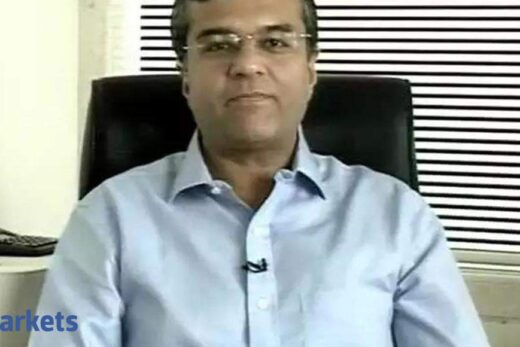This Diwali, you know investors’ portfolios are sitting on very handsome gains compared to last Diwali. Will it be prudent to take some profit off as you are also of the view that valuations on average are higher than the 10-year average and bulk of the positivity is in the price? Or is the scenario not so frothy now to take some money off the table?
We continue to have a neutral view on the market which means that one needs to rebalance the asset allocation based on how profits have been made in the equities. For example, those who invested x percentage in the last year would have seen a significant increase towards equity in the overall offers simply because equities have outperformed other asset classes significantly over the last one year.
While from a medium to long term perspective, we still believe that the corporate earnings cycle is turning up and we are in the nascent stages, over the next two-three years, there is going to be reasonably strong earnings growth ahead. The question is how much of this is already discounted in terms of current valuations. I would say that at least the immediate term is well discounted.
So to that extent one should not extrapolate the kind of returns that one got last year to repeat next year. If the horizon is longer term, of three to five years, and if one is okay to bear some volatility in the interim, these are also the root levels to keep investing in equities. But we are telling investors not to make lump sum investments at these points of time and go for a staggered and disciplined approach over a period of time.
How important would the Fed meeting this week be in terms of cues? How would the tapering start? How much would be the amount of taking off from the market in terms of liquidity and is there a possibility that some part of that taper is already in the price?
Yes, the kind of commentary that has been coming from Fed in the last few meetings is quite clear. We are going to see tapering very soon. Also it is likely to extend until the middle of next calendar year. More or less, markets know that it is likely to start by the end of this year and will continue for some time. The US 10-year yields have moved up now. How much of is that because of the inflation concerns and how much of is it because of the taper concerns, we really do not know. But at least the fixed income market is already pricing in withdrawal of easy liquidity situations from here on. However, equity markets have shrugged off all the nervousness and there has been some minor correction but until now, there has not been a very big concern coming out of the likely taper.
But at these valuations one needs to be cautious. As and when taper begins, there could be another round of nervousness coming in. FIIs over the last one month have been on the selling side in India to take profits. Secondly India still continues to be at a premium to all emerging and global markets in terms of valuations.
In CY2021, emerging markets have largely remained flat but as there is nervousness in the global market, there could be some more selling from FIIs and Indian investors as well.
What are your thoughts on the real estate space? Deepak Parekh recently said that the best time for real estate in many many decades is starting.
We have taken a slightly different view. While we are bullish on the real estate space, we like home improvement and home building sectors rather than just playing through real estate companies. Yes we do have the real estate companies in our portfolio but to play the entire uptick in real estate, we are also betting on cement, various other materials required in home improvement and home building such as tiles, ceramics, paints, pipes like electricals and so on.
So depending on the investment mandate of the fund and the kind of liquidity that is available in the various different sub segments of home improvement, we have build our positions but clearly after a gap of maybe 10-12 years, we are seeing an uptick in real estate. The inventory levels have gone down, the sales momentum has picked up and one could reason out saying that it is because of consolidation in the real estate industry to regulation of RERA or through some symptoms given by various state governments in terms of reduction in stamp duty registration. There has been a better momentum and we also believe that the consolidation that has happened in the last several years is going to help some of the established and large players.
Which to your mind is the most ignored space right now where risk reward is very attractive?
We still believe that the cyclical sectors have more room in terms of possible rerating. We are just seeing economic momentum coming back. If that continues, we definitely see possibilities of an earnings upgrade in some of the cyclical sectors including financials. So, financials, industrials, many manufacturing areas, cement and construction are the pockets where there could be earnings upside as compared to what the current estimates are and if that were to happen, then there is a possibility of rerating in the entire space.
However, when one looks at IT, FMCG or even consumer durables, one can see that most of the upside is already captured in the current valuations and they are historically at high valuations. Also as compared to the market, the valuations levels are quite high and so the possibility of rerating in some of the sectors which have done so wonderfully well in the last 12 months seem limited.
We believe that most of the cyclical pockets should focus areas from here on if you believe that economic momentum is going to sustain and gain from here on.
Morgan Stanley’s Chetan Ahya says that we are in a 2003 to 2007 kind of a scenario. Do you agree?
That statement is partly true but there are some dissimilarities as well. One such dissimilarity is clearly in the initial stages. The entry level valuations were relatively much more attractive as compared to where the valuations are today. The second difference is at that point of time, there was a large scale investment cycle beginning to unfold but today when we look at the economy, we see that while there is a requirement of large scale investments, we really have not seen a large investment cycle becoming visible. I would say that this is slightly different from the 2003-2007 era.
But on the other side, there is a higher retail participation and higher institutional investments happening. There are some added positives and dissimilarities when you compare it to the old cycle.



